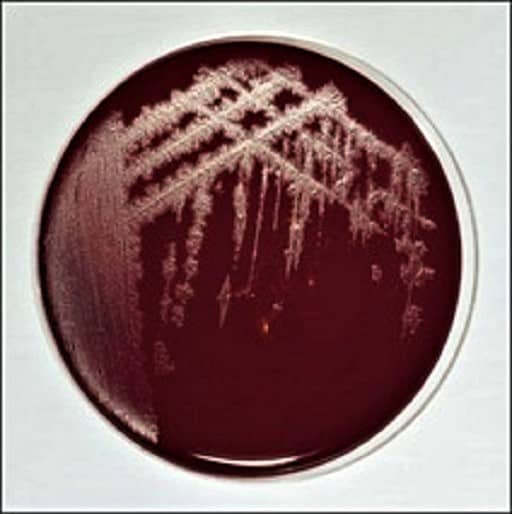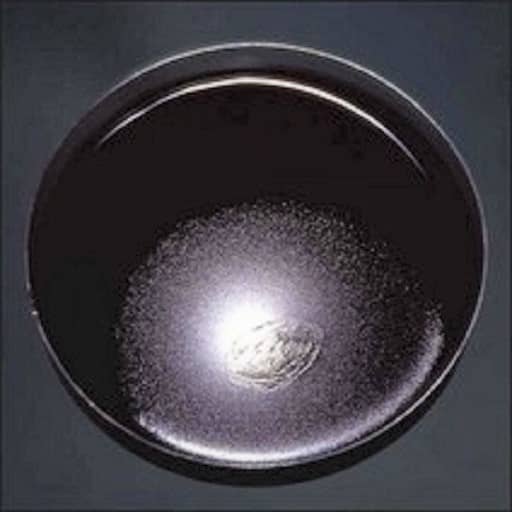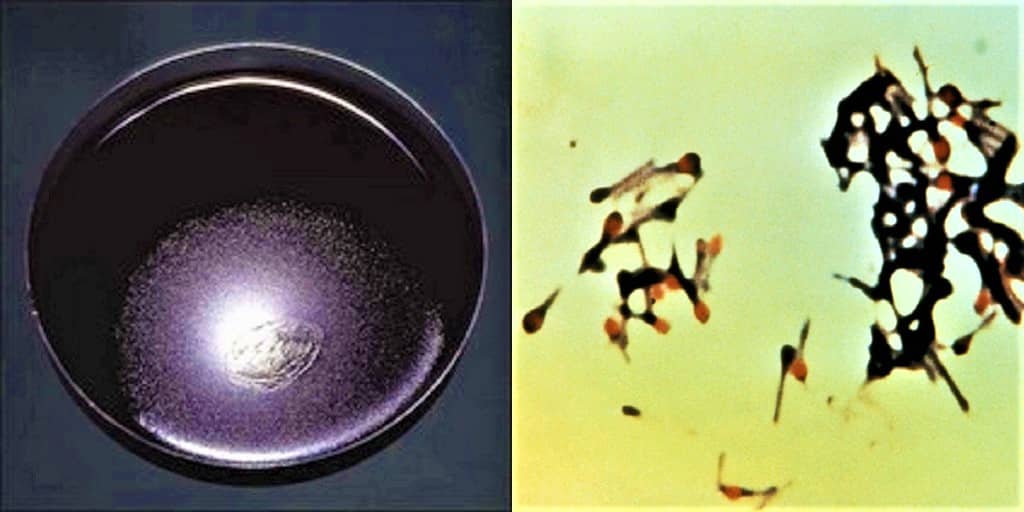MORPHOLOGY OF CLOSTRIDIUM TETANI
Shape – Clostridium tetani is a slender, rod shape (bacillus) bacterium with a characteristic drumstick appearance due to the presence of spores.
Size – The size of Clostridium tetani is about 4–8 µm × 0.5 µm (micrometer).
Arrangement Of Cells – Clostridium tetani is arranged singly, in pairs or in short chains. They are pleomorphic organisms.
Motility – Clostridium tetani is a motile bacterium.
Flagella – Clostridium tetani is a flagellated bacterium with Peritrichate flagella arrangement.
Spores – The Round, terminal & Bulging spores are present in C. tetani giving the bacterium a characteristic drumstick shape appearance when examined under the microscope.
Capsule – C. tetani is a capsulated bacterium. The capsule can easily be demonstrated using India ink preparation, appear as a clear halo in a dark background.
Gram Staining Reaction – Clostridium tetani is a Gram +ve (Positive) bacterium.
Check out the Morphology & Culture characteristics of Clostridium perfringens
MORPHOLOGY AND CULTURE CHARACTERISTICS OF CLOSTRIDIUM PERFRINGENS (C. WELCHII OR BACILLUS WELCHII)
CULTURE REQUIREMENTS OF CLOSTRIDIUM TETANI
⇒ Special requirements – Unlike C. perfringens, Clostridium tetani have no complex nutritional requirements and readily grow in an ordinary medium like NAM. Also, it grows well in the media containing Blood or Serum, commonly Blood Agar medium & Robertson Cooked meat broth medium is used for the cultivation of Clostridium tetani in Laboratory.
⇒ Optimum temperature – Clostridium tetani range from 14 –43°C as per the strain, usually grown at 33–37°C in laboratories.
⇒ Optimum pH – 7.4 – 7.6
⇒ Oxygen requirements – Clostridium tetani is an obligate anaerobic bacterium i.e. can only grow in the absence of oxygen (Strict anaerobe).
⇒ There are various culture media used for the cultivation of C. tetani in the laboratory and most commonly the Sheep Blood Agar medium and CMB medium is used, the other media are as follows:-
- Nutrient Agar medium
- Columbia Horse Blood Agar medium
- MacConkey Agar medium
- The liquid medium (Nutrient Broth medium, TSB medium, etc.).
Check out the Morphology & Culture characteristics of Corynebacterium diphtheriae
MORPHOLOGY AND CULTURE CHARACTERISTICS OF CORYNEBACTERIUM DIPHTHERIAE (DIPHTHERIA BACILLUS)
CULTURE CHARACTERISTICS OF CLOSTRIDIUM TETANI
Cultural Characteristics Stiff Sheep Blood Agar Medium (3% Agar) Nutrient Agar medium (NAM) MacConkey Agar medium (MAC)
Shape Irregular Irregular Irregular
Size 0.5-1 mm Swarming growth 0.5-1 mm
Elevation Slightly raised Flat Slightly raised
Color Grey Colorless – white Greenish fluorescence
Surface Rough Swarming growth spread throughout the plate with rough surface Rough
Structure Translucent –Opaque Transparent - Translucent Translucent –Opaque
Hemolysis Alpha hemolysis initially, followed by beta - hemolysis ----- -----
In Sheep’s Blood Agar medium with normal agar content (1.5%), the growth of Clostridium tetani appears as swarming layer over the surface of the medium. By increasing the content of agar in the medium to 3%, prevents the swarming and individual colonies of the bacterium appear on the Medium. Initially, it shows the alpha hemolytic colonies followed by the beta hemolysis which is due to the action of tetanolysin (a hemolysin toxin produced by C. tetani)

Similarly, in Nutrient agar medium the growth of Clostridium tetani appears as a swarming layer throughout the medium, the layer is so thin and transparent that it is difficult to observe via naked eyes unless you are an experienced microbiologist.

In Roberson’s cooked meat broth medium, C. tetani grow well, produce turbidity and the meat is not digested but may turn Black especially on prolonged incubation. It also produces gas and turns pH of the medium Acidic.
In liquid culture media like Trypticase soy broth or Nutrient broth, the growth of the bacterium occurs as a turbidity in the broth medium, which is further analyzed for the morphology (under the microscope), gram reaction, biochemical tests, and Clostridium tetani specific tests.
Moreover, a different technique which is specific for the cultivation of anaerobic microorganisms is employed for the isolation of Clostridium tetani, known as the Deep agar Shake Culture in which the specimen is inoculated by shaking in freshly prepared agar medium before it solidifies. The Clostridium tetani colonies appear as spherical fluffy balls, 1-3 mm (diameter), filamentous with the radial arrangement in the medium.
THAT’S ALL ABOUT THE MORPHOLOGY AND CULTURE CHARACTERISTICS OF CLOSTRIDIUM TETANI
Further Reading:
Clostridium tetani – Antimicrobe
C. tetani – Textbook of microbiology
Clostridium tetani – Wikipedia
Clostridium tetani – Veterian key

Hi, I’m the Founder and Developer of Paramedics World, a blog truly devoted to Paramedics. I am a Medical Lab Tech, a Web Developer and Bibliophiliac. My greatest hobby is to teach and motivate other peoples to do whatever they wanna do in life.

Good site
I am trying to culture C. tetani using cryopreserved vials. why C. tetani is not growing consistently on TSA media on the same media?